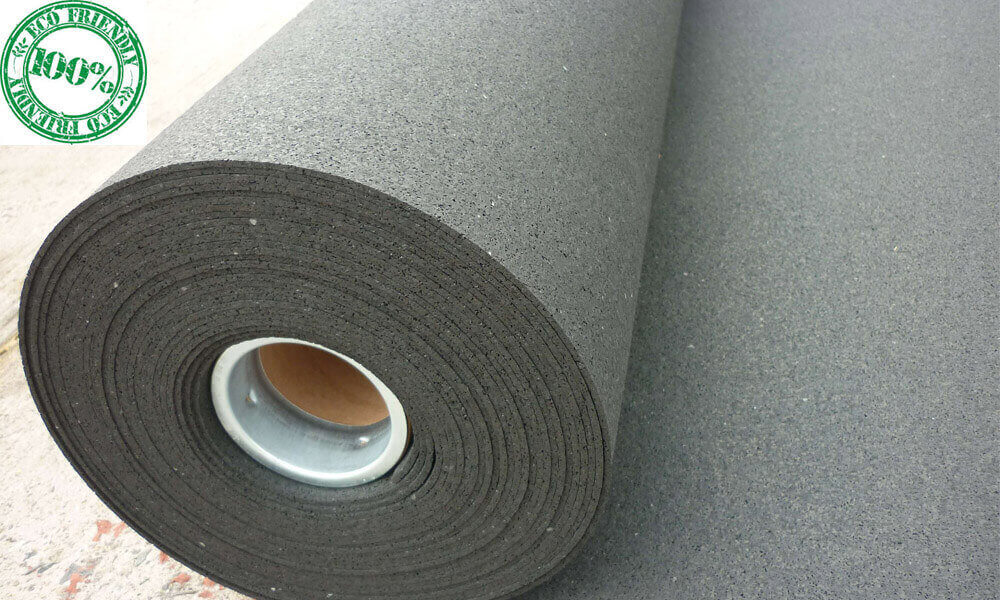Before delving into the question of “is rubber eco friendly?” it would perhaps serve us well to categorize the types of rubber that are on the market and available for use in our everyday applications. First, there is natural rubber, made from the oozy latex material that is extracted from the tree Hevea brasiliensis, sometimes called the Para rubber tree, and can be found on plantations across the world.
Next, there is recycled rubber, rubber that is taken from recycled tires, ground up and turned into crumb, and reformed based on the demands of the market. In playgrounds it could be flooring or in commercial applications recycled rubber sheets could be used to produce specialized parts. Last, there is reclaimed rubber, which is discarded elastomer having undergone the process of de-vulcanization. This allows their use in production similar to other virgin materials. All of these are compared with petroleum-based elastomers which are so-called less eco-friendly rubber products. Each of these is a form of environmentally friendly rubber, and each is demanded in the open market!
The Para rubber tree is prevalent in the tropics and is grown as a cash crop in South America and Southeast Asia. Brazil, Malaysia, India, Thailand, and Indonesia are large producers of this form of rubber. Tree-derived rubber is a friendly to the environment! Seeing that it is made from an entirely natural product—the latex that comes from the Para rubber tree—harvesting and using the product itself has less impact on the environment. In fact, it has been found that the Para rubber tree is an ecologically sustainable crop and actually contributes to the maintenance of the global carbon balance in the atmosphere! And if you are concerned about the safety of the trees, then worry not; the tree is partially “wounded” with an incision on its outer surface, used for a period of time, and then allowed to heal naturally. The secretion of the latex is a part of the tree’s natural healing process. The latex is then strained, diluted with water, treated with acid, rolled into sheets, and then air dried to make it ready for use. The use of this renewable resource is a great way of producing environmentally friendly rubber.
Recycled rubber is for the most part obtained from ground up used and discarded tires. The tire crumb is then produced in a variety of mesh sizes to be used in various applications. By far the most demanded use for the product is for Tire Derived Fuels, or TDPs. The production of this type of rubber eliminates the build-up of waste in landfills, is manufactured at a low cost and with low energy requirements, and, perhaps most importantly, it is the most economical of all rubber options. Subsidized industries have sprouted a vast number of new applications such as: rubber floorings, playground safety products, rubber mulch, shoes, highway safety barriers, speed bumps, and even molded recycled rubber sheets that compete with traditional vulcanized virgin sheet goods. This has lead to the production of less expensive, yet durable products that benefit consumers and the environment. Furthermore, it need not even go through any sort of mechanical or chemical processes to be utilized—whole tires themselves have been found in beneficial and interesting uses, such as the creation of barrier reefs.
Reclaimed rubber is only slightly different, for while it too uses primarily discarded tires in its production, it is required to undergo de-vulcanization and vulcanization once again in order to create products similar to petroleum based goods. Vulcanization involves the adding of sulfur to the rubber itself, in order to create “cross-linked” bonds that strengthen the material. De-vulcanization, then, involves the destruction of these bonds to bring the rubber back to a more pliable state. The material is vulcanized once more and then processed into sheets of rubber for a number of applications. While these processes do take more time, money, and energy to create, the trade-off is that the resulting products are also longer lasting, thus reducing the need to repeat them.
So, is rubber eco friendly? Recycled rubber, reclaimed rubber, and products made from the Para tree sap are all sustainable materials. When rubber is discarded and left on its own, or when it is created in archaic factories, using crude techniques, and the products and bi-products are not managed carefully and consciously, then and only then can rubber become harmful to the environment. Unassuming environmentally friendly rubber products like recycled rubber sheets are now available at far lower costs than petroleum-based elastomers and are used in thousands of applications as effective substitutes. Thankfully, for the most part, rubber is created and produced with the intent of preserving our environment, not harming it!

